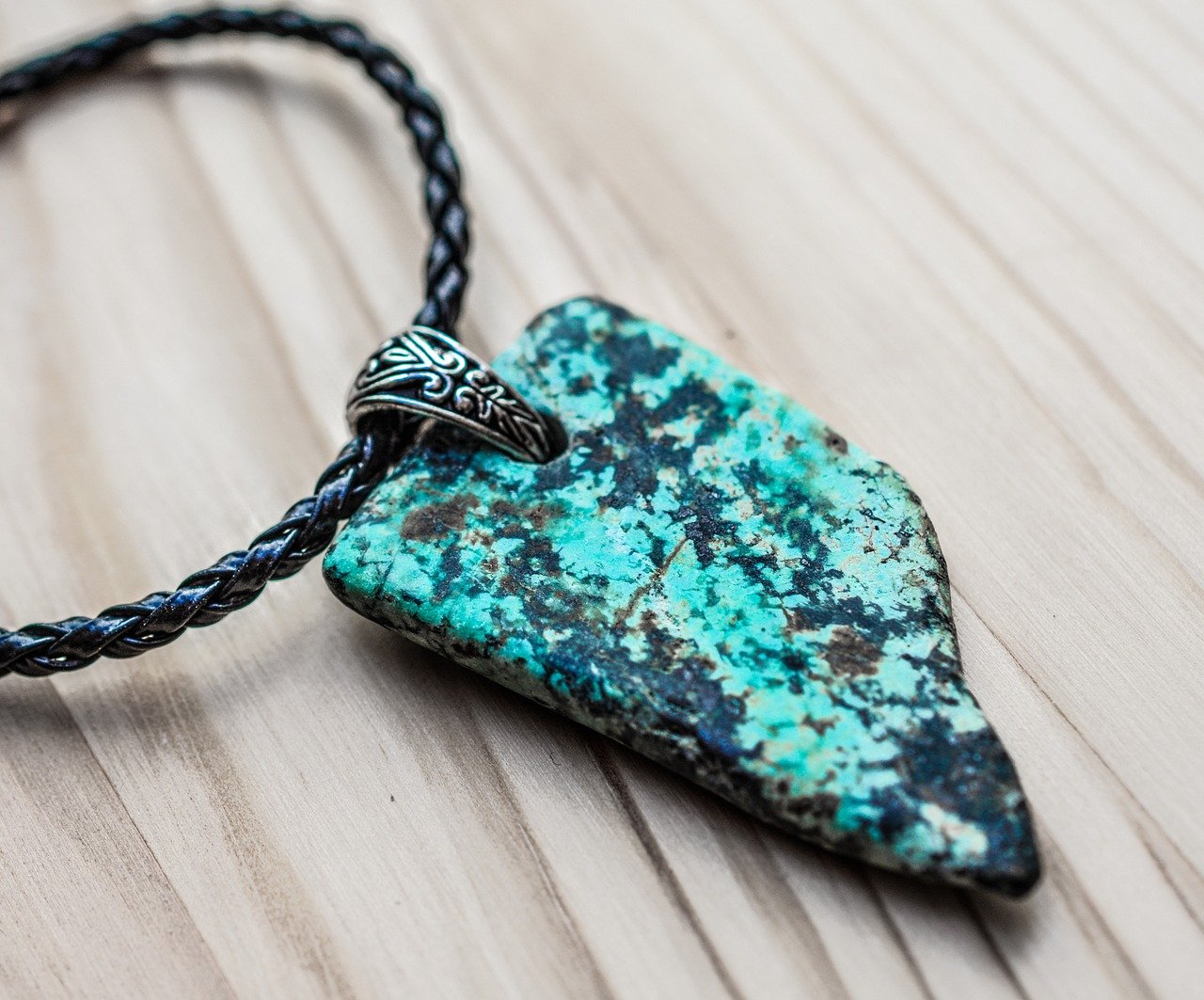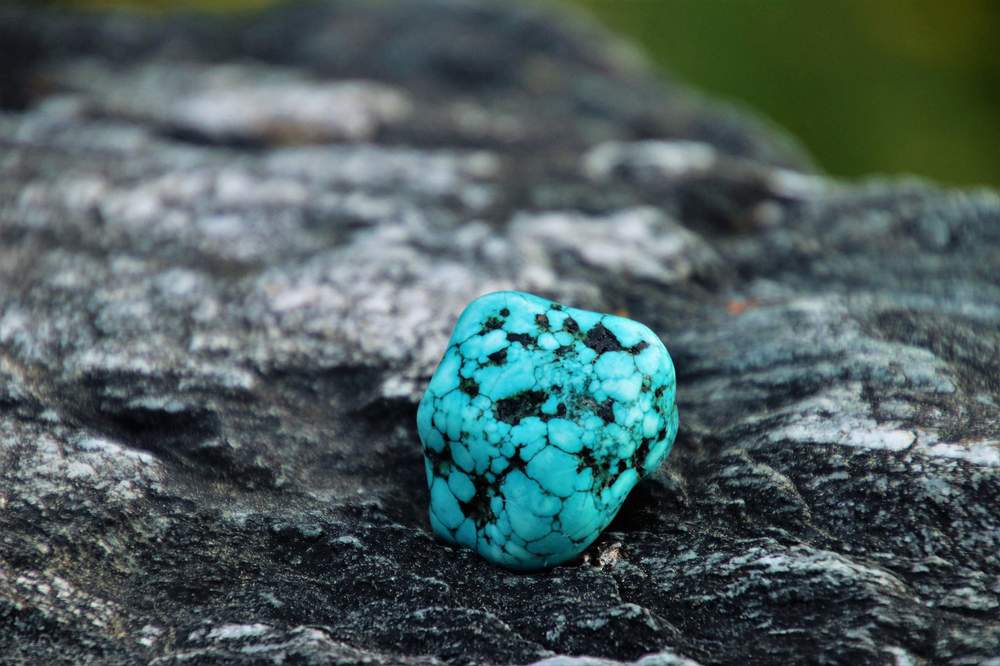Turquoise is one of the world’s oldest and most cherished gemstones, admired for its blue-green hues, spiritual powers, and protective energy. From ancient Egyptian pharaohs to Native American teams, this turquoise stone has been valued as a symbol of wisdom, truth, and protection. Today, people wear turquoise jewelry and use turquoise crystals for healing, emotional balance, and connecting to higher intuition.
What is Turquoise?
Turquoise is a semi‑precious gemstone composed of hydrous phosphate of copper and aluminum, admired for its striking blue to green hues. This vivid stone has been treasured across cultures Egyptian, Persian, Native American for its beauty and spiritual resonance. Known as a symbol of protection, wisdom, and inner peace, turquoise is often used in jewelry and talismans. Its distinctive color and metaphysical associations make it an enduring favorite among both gem enthusiasts and healing practitioners.

History & Origins of Turquoise
The word turquoise comes from the French phrase pierre turquoise, meaning “Turkish stone,” as it was first brought to Europe through Turkey from Persian mines. Ancient Egyptians used turquoise gemstones in tombs and ornaments, while Native Americans believed it connected heaven and earth, offering spiritual protection. The most famous sources of natural turquoise are Persia (Iran), Egypt, Tibet, and the American Southwest.
The Meaning of Turquoise
The meaning of turquoise revolves around truth, courage, and communication. Across cultures, it was seen as a sacred stone of luck, friendship, and protection. Native Americans wore turquoise to connect with the spirit world, while Persians believed it brought prosperity and warded off evil. Today, turquoise is still associated with inner calm, confidence, and emotional balance, making it a crystal that never loses its relevance.
Healing Properties of Turquoise
As a healing crystal, turquoise is known to strengthen the immune system, support respiratory health, and encourage detoxification. It is especially beneficial for the throat chakra, helping relieve sore throats, allergies, and breathing issues. On an emotional level, turquoise reduces stress, anxiety, and exhaustion, replacing them with feelings of peace, vitality, and positivity.
Types of Turquoise
Turquoise varieties include Persian turquoise (brilliant blue with minimal matrix), Sleeping Beauty (Arizona’s vivid light blue), and Kingman turquoise, prized for its unique blue‑green shades and intricate veining. African blue turquoise and batu blue lace agate may be similar in appearance but differ mineralogically. Each type brings distinct patterns and metaphysical energy, making selection a personal and meaningful experience.
Natural Turquoise
Natural turquoise refers to untreated, unenhanced turquoise that comes straight from the earth with no chemical stabilizers or color enhancements. This type is rare and highly valuable due to its purity and natural beauty. Its color ranges from pale sky blue to deep green, depending on its copper and iron content. Natural turquoise is relatively soft and porous, making it more fragile and less common in commercial jewelry. Gem collectors and metaphysical users highly prize this form for its authenticity and strong healing energy.
Green Turquoise
Green Turquoise has a unique blend of blue and green hues, often with brown or golden matrix patterns. Its coloring is caused by higher levels of iron instead of copper. Known as a stone of growth, renewal, and grounding, it helps align the Heart Chakra, encouraging emotional healing, compassion, and balance. Green turquoise is rare and often favored by those seeking a stronger connection with nature and earth energy.
Persian Turquoise
Persian Turquoise is one of the most highly prized varieties, known for its pure sky-blue color with little to no visible matrix. Mined for over 2,000 years in Iran, this turquoise was worn by royalty and considered a symbol of wealth, luck, and spiritual protection. Its vibrant hue does not fade easily, which makes it ideal for fine turquoise jewelry. Collectors and healers value it as a stone of wisdom, prosperity, and divine communication.
Mexican Turquoise
Mexican Turquoise is recognized for its intense blue-green shades and unique matrix inclusions. It has been historically used in Aztec and Mayan cultures, where it was considered a stone of the gods and used in sacred rituals. Today, it is appreciated for its strong protective energy, ability to boost vitality, and its beautiful use in handcrafted jewelry. Mexican turquoise reflects a deep connection to ancient wisdom and spiritual strength.
Sleeping Beauty Turquoise
Sleeping Beauty Turquoise comes from Arizona, USA, and is admired for its clean, robin’s-egg blue color. Unlike most turquoise, it has a smooth, matrix-free appearance, making it highly sought after for elegant rings, pendants, and bracelets. It symbolizes purity, inner calm, and emotional balance, making it popular in both modern fashion and traditional healing practices. Its rarity since the mine closed has made it even more valuable and collectible.
Kingman Turquoise
Kingman Turquoise, found in Arizona’s Kingman Mine, showcases a range of blue hues from pale to deep blue with a distinctive black or brown matrix. It’s one of the oldest known turquoise mines in the U.S. and continues to produce high-quality stones. The spiderweb matrix pattern often seen in Kingman turquoise adds to its appeal and uniqueness.
Chinese Turquoise
Chinese Turquoise is one of the most widely available varieties, often featuring beautiful webbed or spotted patterns. It has been mined in China for centuries and is highly valued for both jewelry making and spiritual use. This variety is known for its ability to protect against negativity, enhance confidence, and strengthen communication skills. Its wide range of shades from light blue to green makes it versatile and popular worldwide.
Native American Turquoise
Native American Turquoise often displays dark veins or spiderweb-like matrix patterns that give it a striking appearance. Used for centuries by Native American such as groups in amulets, necklaces, and ceremonial tools, it was considered a sacred stone of protection and spiritual connection. This turquoise type embodies earth energy, grounding, and ancestral wisdom, making it an important crystal for healing rituals and meditation.
Royston Turquoise
Royston Turquoise, mined in Nevada, is easily recognized by its striking color combinations of green, blue, and golden-brown matrix. Each stone is unique, with vivid color zoning that makes it a favorite for bold, statement pieces. It’s one of the few varieties still actively mined today in the U.S.
Morenci Turquoise
Coming from southeastern Arizona, Morenci Turquoise is known for its high-grade, vibrant blue color and shiny pyrite inclusions that resemble silver. This eye-catching stone is rare due to the mine’s closure, and its metallic flecks give it a distinctive, collectible appeal.
Tibetan Turquoise
Tibetan Turquoise is deeply revered in Himalayan cultures, often considered a holy stone of protection, health, and fortune. Its colors range from deep blue to green, often with heavy brown or black matrix. Tibetans believe turquoise changes shades with the wearer’s health and emotions, making it a highly personal stone. It is often used in prayer beads, talismans, and healing rituals, serving as a link between the physical and spiritual realms.
Number Eight Turquoise
Named after the Number Eight Mine in Nevada, this turquoise features a rich golden-brown to red matrix with bright blue to green-blue color. Number Eight Turquoise is a collector’s gem due to its distinct matrix and the mine’s limited production. It’s often used in high-end Southwestern jewelry.
White Buffalo (Often Mistaken for Turquoise)
Though not technically turquoise, White Buffalo is often marketed as such due to its similar appearance. Found in Nevada, it has a white body color with black or brown veining. It’s a popular alternative in jewelry for those seeking the aesthetic of turquoise without the traditional blue or green hues.
Turquoise and Spiritual Growth
Turquoise is a crystal that enhances spiritual awareness and higher consciousness. It acts as a bridge between the physical and spiritual worlds, allowing deeper intuition, wisdom, and protection. Many healers use turquoise for chakra balancing and meditation, as it connects with both the Throat Chakra for communication and the Third Eye Chakra for clarity and intuition.
Metaphysical and Spiritual Properties
Turquoise holds deep metaphysical significance, often seen as a bridge between earth and heaven. It aligns closely with the throat chakra, helping individuals express themselves openly and truthfully. By enhancing communication, turquoise allows one to speak with clarity, confidence, and compassion. Spiritually, it is a protective amulet against negative energies, while also amplifying intuition and spiritual awareness. Many believe it creates a shield of energy, keeping the wearer safe and connected to higher guidance.
Symbolism and Ancient Significance
Throughout history, turquoise has been worn as a talisman of good fortune, protection, and spiritual power. Egyptian pharaohs, Persian royalty, and Native American shamans all adorned themselves with turquoise for strength, guidance, and safe travels. It was thought to ward off evil spirits and bring blessings to its owner. Even today, turquoise remains a stone of protection and prosperity, symbolizing truth, loyalty, and enduring love. Its timeless legacy makes it one of the most meaningful gemstones in the world.
Colors of Turquoise – More Than Just Blue
While most people picture turquoise gemstones as sky blue, this vibrant mineral comes in a stunning variety of shades. From deep green turquoise to bluish-green and even yellowish tones, its color depends on the levels of copper and iron within the stone. High-copper content produces the classic robin’s egg blue, while more iron yields greenish turquoise. Rarely, turquoise may display a matrix of black, brown, or gold veins, enhancing its natural character. Each color variation holds its own charm and energy, making natural turquoise a uniquely expressive gemstone for both collectors and jewelry lovers.
Practical Uses of Turquoise
Turquoise can be used in various forms to harness its energy and beauty. Worn as rings, pendants, or bracelets, it provides continuous healing and protective vibrations. In meditation, holding turquoise enhances calmness and deepens spiritual connection, while placing it in the home brings harmony and clear communication among family members. Many also use turquoise in crystal grids to strengthen energy flow and align with intentions of healing, truth, and abundance. Its versatility makes it a powerful stone for daily life.
How to Identify Genuine Turquoise
To distinguish real turquoise, look for a stone with natural color variation and matrix that aren’t overly uniform. Avoid stones that appear painted or too glossy these may be dyed or synthetic. Testers may use a magnifier to spot inconsistencies or surface dye. Authentic turquoise often feels cool, may leave a faint powder residue when scratched, and shows variations in depth of tone. Purchasing from reputable sellers with certification helps ensure authenticity.
Communication & Spiritual Significance
Known as a throat chakra stone, turquoise encourages clarity, self-expression, and truthful communication. Spiritually, it’s considered a bridge to higher consciousness, helping remove energetic blockages and boost intuitive balance. Its protective reputation stems from ancient belief systems, where it was used to safeguard travelers and bring spiritual insight.
Turquoise in Jewelry
Wearing turquoise jewelry is one of the best ways to benefit from its energy. Rings, pendants, earrings, and bracelets not only showcase its beauty but also keep the stone close to the skin, allowing it to amplify protection, communication, and healing. For centuries, travelers wore turquoise amulets for good luck and safety, a tradition still followed today in modern crystal practices.
Zodiac and Birthstone Connection
Turquoise is the traditional December birthstone and is associated with the Sagittarius zodiac sign, though it also resonates with Pisces, Scorpio, and Aquarius. People born under these signs often find that turquoise enhances their intuition, creativity, and communication skills. As a zodiac crystal, it helps balance emotions, brings luck, and strengthens spiritual energy.
Identifying Real vs Fake Turquoise
Because turquoise is highly valuable, it is often imitated by dyed stones such as howlite or magnesite. Real turquoise usually has natural variations in its blue-green shades, sometimes with black or brown matrix veins, while fakes tend to look too uniform. Knowing how to identify authentic turquoise ensures you benefit from both its metaphysical energy and genuine beauty.
Caring for Turquoise
Because turquoise is a softer, porous gemstone, it requires gentle care to preserve its beauty and energy. It should be kept away from harsh chemicals, perfumes, and prolonged water exposure. The best way to cleanse turquoise is through smudging with sage, leaving it under moonlight, or using sound vibrations. Avoid salt or chemical cleansers, as they can damage the surface. With proper care, turquoise can retain its vibrant color and energetic strength for generations, making it a treasured heirloom stone.
FAQs About Turquoise Gems:
Turquoise supports physical healing, emotional balance, and enhances truthful communication.
Yes, it is one of the traditional birthstones for December, valued for its expressive and protective qualities.
It aligns strongly with the throat chakra, aiding in clear communication and emotional truth.
Types include Persian, Sleeping Beauty, Kingman, Bisbee, Tibetan, and more each with unique color and origin.
Stabilization strengthens soft turquoise and helps retain color, making it suitable for daily wear.
Turquoise symbolizes healing, wisdom, protection, and emotional balance across many cultures.
Yes, but untreated turquoise needs care. Stabilized turquoise is more durable for everyday jewelry.
Yes, it can range from green, yellow, pink, white to even black depending on its mineral content.
Yes, especially untreated stones from rare mines like Sleeping Beauty. Value depends on color, hardness, and origin.
Persian turquoise is highly prized for its uniform, vivid blue without matrix often the most sought-after.
Yes, natural turquoise can darken from exposure to oils, sunlight, or moisture.
Conclusion: The Timeless Allure of Turquoise
Turquoise remains one of the most cherished gemstones, valued for its vivid color, deep symbolism, and rich history. From ancient amulets to modern jewelry, it brings healing, protection, and emotional balance. Whether you’re buying natural turquoise, exploring its many types, or connecting with its spiritual energy, this gem offers lasting beauty and meaning. With the right care, turquoise jewelry will keep its vibrant charm and positive energy for years to come. Let turquoise inspire clarity, creativity, and calm in your life.






